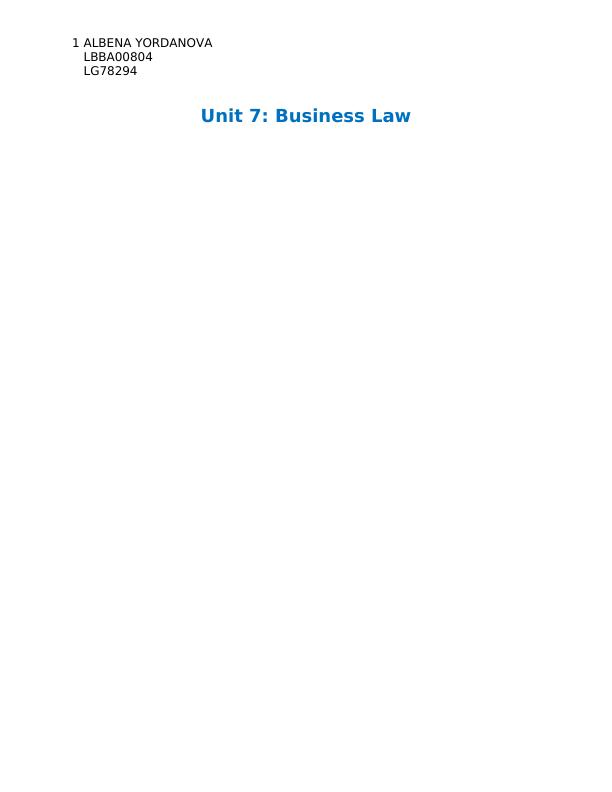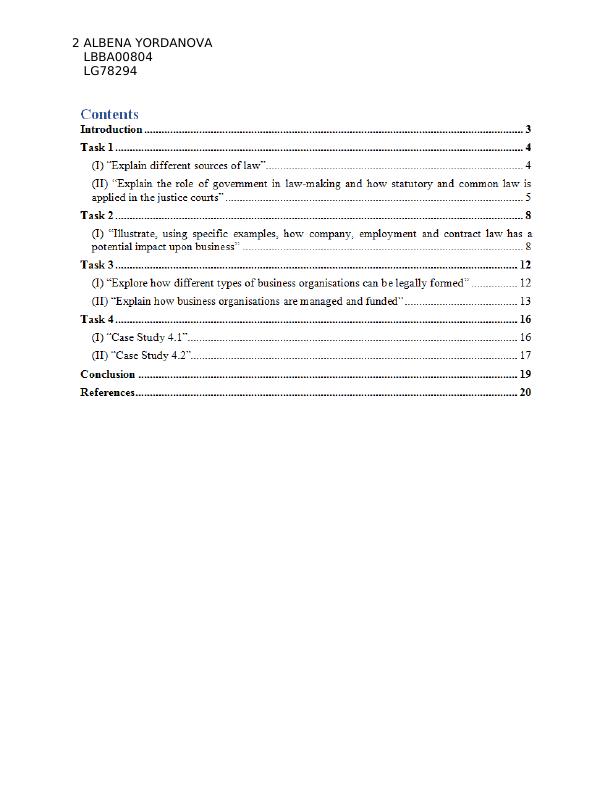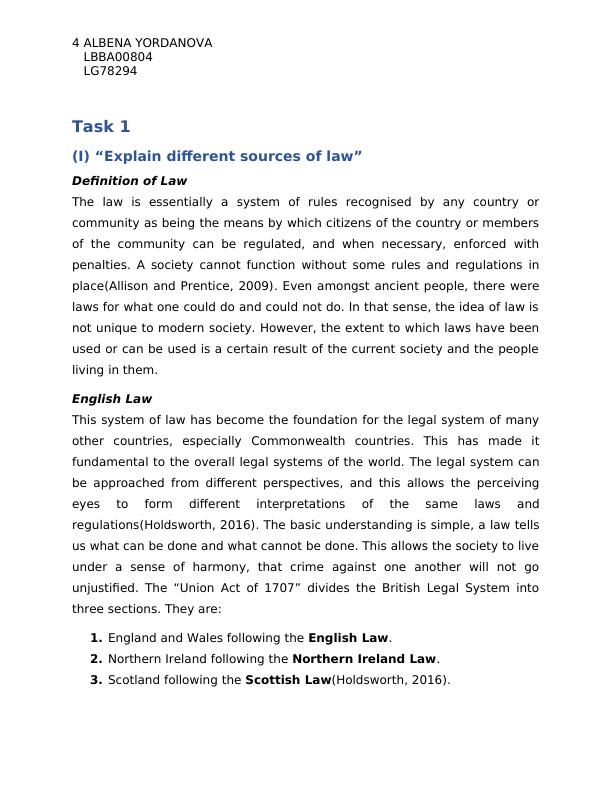Ask a question from expert
The Social Baade of Chaos
25 Pages5121 Words432 Views
Added on 2021-03-03
About This Document
In the most basic sense, laws protect people’s rights and serve justice to criminals and victims. Similarly, business organisations must also follow their own set of rules and regulations specially designed for them(Allison and Prentice, 2009). Task 1 (I) “Explain different sources of law” Definition of Law The law is essentially a system of rules recognised by any country or community as being the means by which citizens of the country or members of the community can be regulated, and when necessary, enforced with
The Social Baade of Chaos
Added on 2021-03-03
BookmarkShareRelated Documents
End of preview
Want to access all the pages? Upload your documents or become a member.
Legal System for Business: Classifications of Law, Source of Law, and UK Law Making Process for Employment Law
|9
|2805
|155
Understanding UK Business Law: Classifications, Sources, and Processes
|8
|2662
|484
Business Law: Classification, Source, and UK Law Making Process
|8
|2778
|191
Legal System of England and Wales: Exam Questions and Answers
|9
|3019
|158
Desklib - Online Library for Study Material with Solved Assignments, Essays, Dissertations
|10
|3636
|382
UK Legal System: Classification of Law, Sources of Law, and Law Making Process
|10
|2722
|123





